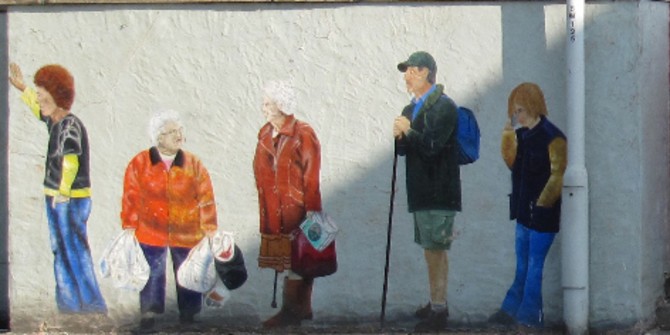The promise of a return to ‘normal life’ has preoccupied governments during the pandemic. But for many people who have suffered mentally and financially, fun-seeking is out of reach. Aslı Ermiş-Mert (Koç University) says investing in their happiness should now be a priority.
What effect has the pandemic had on relative happiness at the macro level? At first glance, very little. The World Happiness Report 2021 shows that there was little change in the world’s happiest nations, with Finland, Iceland, Denmark and Switzerland still occupying the top four rankings. Germany experienced a drop, but for some of the least happy nations (Mongolia, Moldova, Serbia) there was a notable improvement.
Although the pandemic has created some shared experiences (such as lockdown), it has not changed the gap in happiness between people from different socio-economic backgrounds, gender, age and work status. Those who enjoyed better housing conditions, access to good healthcare, secure jobs that could be done from home were less affected by lockdown. For others – who might experience domestic violence, were clinically vulnerable, and worked in precarious jobs – it was far more stressful.
But how did the pandemic affect people’s tendency to compare their circumstances to other people’s? This is a significant determinant of happiness levels and corresponds to the social comparison theory. Ruut Veenhoven says that “sociologists see subjective well-being as a cognitive “construct” shaped by collective notions of the good life and as a result of comparisons, particularly social comparison”, and defines subjective well-being as the distance between one’s perception of how life should be as opposed to how it is. Given that the pandemic has worsened and diversified existing inequalities, the gap between should and is has got bigger. This could potentially reshape the happiness gap along intersectional lines.

As the experience of the pandemic fades, the extent of this happiness gap in relation to deepening social inequalities will become clearer. Will the criteria for ‘happiness’ change – at least temporarily? After a prolonged lack of socialising, leisure, and entertainment, we might expect a hedonic outburst in countries that have suffered less overall from COVID-19. But this explosion of fun-seeking may not apply to those who have suffered the most – perhaps because they are shielding, were bereaved, have long COVID, cannot afford holidays or expensive indulgences, or have been experiencing mental health issues under the ongoing uncertainties. Reopening pubs, bars and restaurants, and most recently nightclubs, has been celebrated and characterised as a ‘return to normality’ by governments. But in policy terms they do nowhere near enough to redress the inequalities that have emerged during the pandemic. Policy responses need to move beyond a return to pre-pandemic life. Governments need to try to compensate the people and communities most badly affected by COVID.
This means encouraging healthy eating and exercise (people living in England put on weight during the pandemic), as well as psychological support. There should be investment in non-COVID healthcare, since people who are unwell are in no position to enjoy ‘freedom days’. Job support and labour market re-integration for those laid off (particularly after long-term furlough) are also key to the healing process, considering that unemployed people cannot afford meals out, holidays and many other leisure activities.
The World Happiness Report identifies four main COVID-related impacts on mental health:
- Anxiety about catching and recovering from the virus;
- Worries about short- and long-term financial difficulties;
- Difficult domestic living conditions during lockdowns;
- Changes in relationships, lifestyle and social connections due to restrictions or bans on social contact and activities.
The first of these can be helped by providing transparent information about COVID and its spread. Evidence from Haiyang Yang and Jingjing Ma’s research shows that higher perceived knowledge about the virus is correlated with rising levels of feeling in control. This in turn affects wellbeing.
The second can be tackled with targeted financial support. The third, which might involve problems with homeschooling, a greater domestic burden, or domestic violence, needs to be addressed by specific government interventions. The final impact is challenging. But accessible counselling services and wellbeing programmes involving educational, cultural and social events with a rehabilitative element can be very effective. Helping people to rebuild social interactions (for example, by providing free internet access for those who lack it) would also be a positive step towards improving mental health. Given that the elderly, women, the less well-off and other vulnerable groups have particularly struggled with the consequences of COVID, they deserve to be prioritised.
Investing in people’s happiness would be an ambitious departure for many governments. But if they truly want people to return to ‘normal’ life and revive the parts of the economy that depend on it, these policies would be more than worthwhile.
This post represents the views of the author and not those of the COVID-19 blog, nor LSE.


